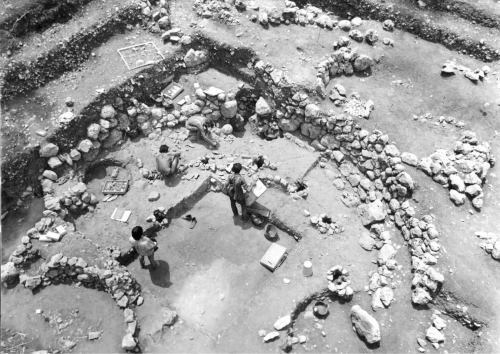
DOM-NAT
The invention of the durable house within the first sedentary societies of the Near East: an analysis of the materiality of a domestic space, as practised and transmitted over the course of generations
Scientific responsibility :
- Fanny Bocquentin
- Elisabeth Bellon
- Jean-Yves Blaise
- Vincent Lemire
- Natalia Gubenko
- Thomas Sagory
- Corinne Jouys-Barbelin
Methodological axes :
Thematic fields :
Disciplinary sectors :
Funding :
- DIM PAMIR
Project ID : IDF-DIM-PAMIR-2022-2-009
Summary :
The durable adoption of a sedentary way of life by hunter-gatherers at the end of the Palaeolithic is a decisive turning point for human societies. This shift involves the invention of a new form of habitat, new means of circulating and interacting with the environment, as well as a new way of being in the world. It is during the Early Natufian in the Levant (13,100-11,600 BC) that the very first round houses appear, made of stone walls and grouped into hamlets. One of the most remarkable is that of Eynan-Mallaha, in Galilee, which was occupied for almost 2,500 years. The oldest and most massive house in this site, rebuilt on several occasions, was subjected to detailed archaeological recording between 1961 and 1976. The quality of the data allows for novel spatial and diachronic analyses in order to modernise our interpretations in response to the important evolutions in our analytical tool kit and scientific questions. This post-doctoral project hopes to reconstruct the organisation of this perennial domestic space where at least 5 levels and 3 phases of construction (shelters 131-51-62) are superimposed. Nowadays, all data produced concerning the archaeological objects and architectural elements which constitute this succession of events can be efficiently brought together, through the examination and analysis of archaeological archives, using digital and statistical tools. Our first goal is to better define the moments of occupation, the alternation between the living and the dead who shared this space, the phases when the space was abandoned, restored, and reconstructed. Our second goal is to understand how this space was structured: areas of activity or rest; passages; placement, circulation, and interactions of utilitarian and symbolic objects; waste management. A comparative synthesis will allow us to propose hypotheses regarding strategies of construction and use of space, and the transmission of these strategies through generations and to discuss their stability, allowing us to identify the key features that structure domestic space in these young sedentary societies.
Post-doctoral student : Elisa Caron-Laviolette

